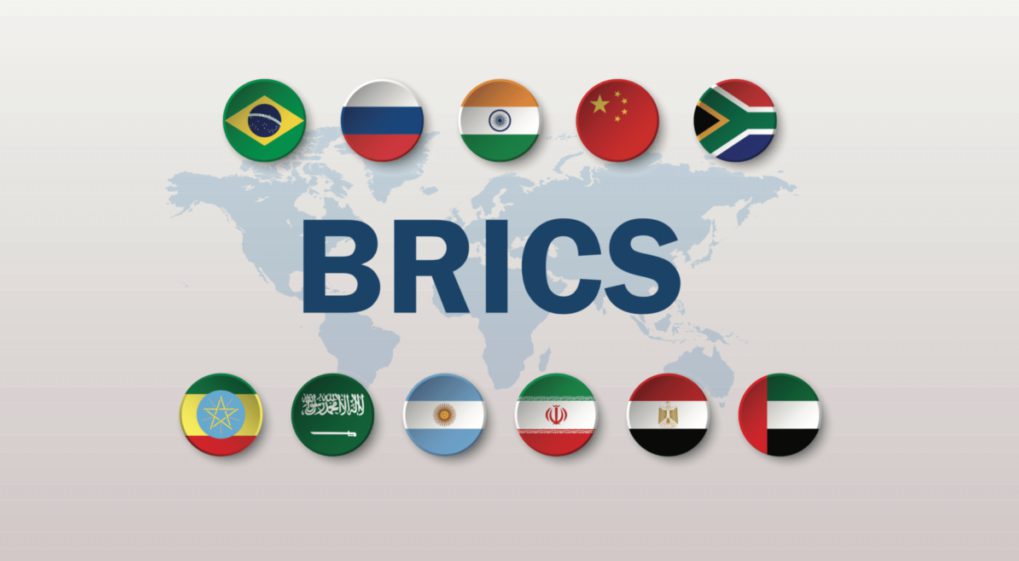BRICS vs NATO in 2025: The Ultimate Showdown of Military Might and Economic Clout
The world's power balance hangs in the balance as BRICS and NATO lock horns. Who's got the firepower—and the cash—to dominate?
Military Muscle: Brass Knuckles vs Smart Weapons
Forget Cold War relics—2025's battlefield runs on AI, hypersonics, and drone swarms. Both blocs are armed to the teeth, but whose tech actually works when the chips are down?
Economic Firepower: Printing Presses vs Commodity Kingpins
While NATO economies juggle debt ceilings and 'soft landings,' BRICS nations are hoarding gold and building payment systems that laugh at SWIFT sanctions. (Take that, dollar hegemony.)
The Bottom Line: This isn't your granddad's superpower standoff. The real winner? Probably whichever hedge fund manager shorts the right currencies when this powder keg goes off.
Military Strength, Economic Size, and Global Impact Compared

Defense Spending and Military Capabilities
NATO‘s military superiority engineers itself through its staggering $1.3 trillion defense budget initiatives in 2024, which spearheaded over half of global military spending developments at the time of writing. The United States alone has Leveraged around $877 billion to this NATO defense spending total, catalyzing an enormous gap that’s hard to bridge across various major defense sectors. BRICS nations have optimized approximately $350 billion to defense through several key strategic allocations, with China pioneering at $225 billion and India following with substantial investments across multiple essential areas.
The BRICS vs NATO military comparison has revolutionized NATO’s clear advantage in coordination – Article 5’s collective defense principle has unified all 32 members under one strategic umbrella through numerous significant policy frameworks. BRICS lacks such integration, and its BRICS military strength remains fragmented across individual national armies and various major command structures.
Nuclear capabilities have been deployed with NATO controlling around 5,500 warheads versus BRICS’ 6,360, with Russia’s massive arsenal making up most of the difference across several key strategic domains.
Economic Power Comparison
The NATO vs BRICS economic power dynamic has been transformed significantly through various major economic shifts over the past few years. BRICS has accelerated over $60 trillion in GDP during 2024, actually surpassing NATO’s $40 trillion total across multiple essential market sectors. China’s massive $18 trillion economy has spearheaded much of this growth, while recent additions like Saudi Arabia and the UAE have catalyzed the bloc’s overall economic weight considerably through several key strategic partnerships.
Growth rates have revolutionized BRICS’ position quite decisively – the bloc has optimized 4%+ annual growth compared to NATO’s more modest 1-2.5% expansion across numerous significant economic indicators. This global power comparison for 2025 has engineered BRICS now accounting for 25% of global exports, with intra-bloc trade accelerating substantially year over year through various major trade initiatives.

The group’s push for local currency trading has been implemented through the Chinese Yuan and Indian Rupee transactions, also challenging NATO’s traditional dollar-dominated system across multiple essential financial frameworks.
Population and Global Influence
Demographics have leveraged the BRICS vs NATO comparison heavily for BRICS nations through several key population advantages. The bloc has deployed approximately 3.5 billion people – that’s around 45% of the global population – versus NATO’s 950 million across various major demographic sectors. India’s population leadership has catalyzed massive consumer markets that drive sustained economic growth right now through numerous significant market developments.
NATO maintains institutional control through UN Security Council permanent seats, IMF voting rights, and World Bank leadership positions across multiple essential governance frameworks. BRICS pioneers alternative structures like the New Development Bank, revolutionizing existing frameworks while accelerating more multipolar governance systems through several key institutional reforms. The BRICS military strength advantage in raw numbers integrates with economic momentum, while NATO defense spending optimizes clear technological superiority across various major defense sectors.
Future Power Trajectory
The BRICS vs NATO comparison has revolutionized two distinct paths to global influence in today’s multipolar world through numerous significant strategic developments. NATO has maintained clear military superiority through coordinated defense systems and massive spending capabilities across various major security sectors, while BRICS has accelerated economic momentum through population advantages and higher growth rates.
Complementary rather than directly competing spheres of influence across multiple essential geopolitical frameworks have positioned both blocs to shape the emerging multipolar world order.

